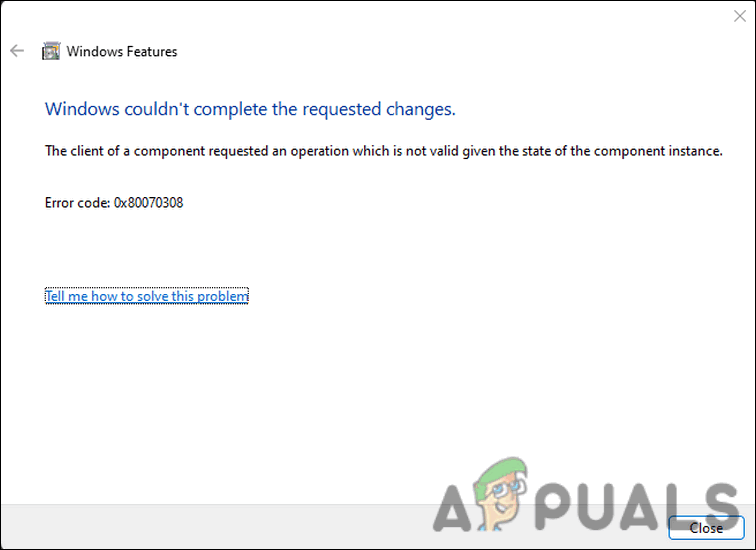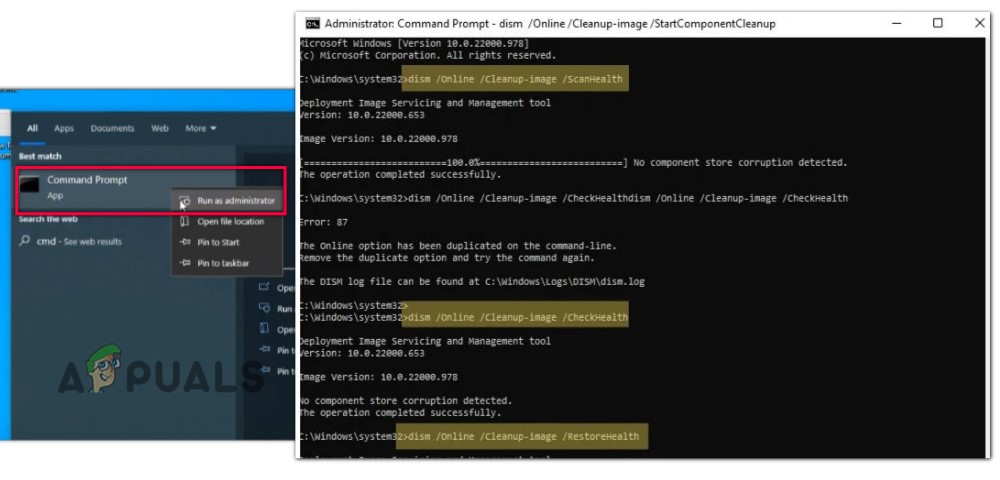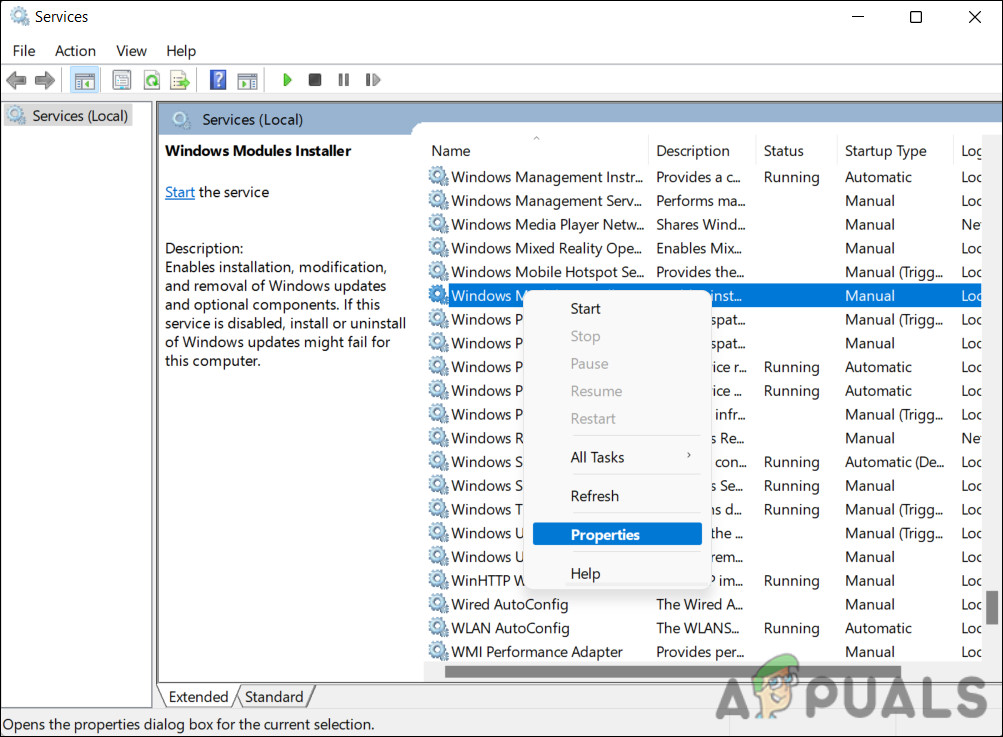Fix: Error Code: 0x80070308 When Enabling Windows Features
The error code 0x80070308 pops up when the users try to change Windows configuration by checking or unchecking any of the options in the Turn Windows features on or off dialog.

The error code states that ‘Windows couldn’t complete requested changes’ and also says that ‘The client of a component requested an operation which is not valid given the state of the component instance’. We had a look into the issue and discovered that it can be caused by the following reasons:
- Outdated Windows – if you are running an outdated version, you will likely face such issues due to incompatibility. The easiest way to counter this problem is by installing the pending updates on the system one by one.
- System file corruption – there might be a corruption error or inconsistency within the system that is causing the problem. If this scenario is applicable, you can run built-in troubleshooting utilities like the System File Checker and DISM to identify and resolve the issues.
- Windows module installer service is disabled – the Windows features utility is linked to the Windows module installer service. If that feature is disabled or just not working properly, you will run into the error at hand.
Now that you know about the potential causes of the problem, let’s take a look at the troubleshooting methods that will help you fix the problem.
1. Install the Pending Updates
The first thing that we recommend you do is install the available and pending system updates. You are likely facing the problem because of an incompatibility issue within the system which can be fixed by upgrading to the latest available build.
If you are a Windows 10 user, then this might also be a good time to upgrade to Windows 11.
If you simply want to install the pending updates for now, follow the steps below to proceed:
- Press the Win + I keys to open Windows Settings.
- Choose Windows Update from the left pane.
- Click on the Check for updates button in the right side of the window. The system will now scan for available updates and present them to you.

Checking for available pending updates - Click on the Download & install option to proceed.
- Once all the updates are downloaded, restart your computer and check if the issue is resolved.
2. Run System Scans
As we mentioned earlier, your system might also be dealing with a corruption error which is preventing the Turn Windows features on or off utility to act up.
The best way to move forward, in this case, is by scanning the system for underlying issues using the troubleshooting utilities developed by Microsoft. In the case of this error, the two utilities that can help you fix the problem are the System File Checker (SFC) and Deployment Image Servicing and Management (DISM.exe).
The System File Checker, as the name suggests scans the protected system files for issues. If any file is corrupt, it will replace it with its healthier, cached counterpart. DISM, on the other hand, is responsible for repairing the system image, and is considered to be more powerful than SFC.
We will be using the SFC and DISM utilities via Command Prompt in this method. Make sure you are logged into Windows as an administrator before you proceed.
Here is all that you need to do:
- Press Win + R to open a Run dialog.
- Type cmd in the text field of Run and press Ctrl + Shift + Enter.
- Alternatively, you can launch Windows search by pressing Win + S.
- Type cmd in it and click on Run as administrator.
- Click Yes in the User Account Control prompt.
- In the Command Prompt window, execute the commands below one by one:
DISM /Online /Cleanup-Image /ScanHealth DISM /Online /Cleanup-Image /CheckHealth DISM /Online /Cleanup-image /RestoreHealth sfc /scannow

Run SFC & DISM Scanning
Wait for each command to execute before proceeding with the next.
Once done, close the Command Prompt window and check if you can now make changes using the Turn Windows features on or off utility.
3. Ensure the Windows Module Installer Service is Running
All Windows utilities have related services working in the system that allow them to function properly. If any of these services fail to work properly or are disabled, the relevant utilities will run into errors like the one under discussion.
The Windows features utility is connected to the Windows module installer service. This service is enabled by default, but if it has been disabled or is dealing with a corruption error, you will run into the error code 0x80070308.
The solution, in this case, is simple, as all that you need to do is start/restart this service. We will be using the Windows Services dialogue for this.
Here is how you can do that:
- Press Win + R together to open Run.
- Type services.msc in Run and hit Enter.
- In the following dialog, look for the Windows Module Installer service and right-click on it.
- Choose Properties from the context menu.

Access the properties of the Windows module installer - In the Properties dialog, click on the Start button if the service is disabled.
- If the service is running, click on the Stop button, wait for a few seconds, and then hit Start again.

Start the Windows module installer - Expand the dropdown for Startup, type in the same dialog and choose Automatic.
- Finally, click Apply > OK to save the changes.
If the issue was being caused due to the Windows module installer service being inefficient, the steps above should fix it. You should now be able to make changes in the Windows Features dialog without any problems.
Contact Microsoft Support Team
If none of the above methods does the trick, you can reach out to the official Microsoft support team online. You can report the issue to them, and hopefully, they will be able to find the exact cause of the issue and suggest you a relevant fix accordingly.
Another thing that you can do is use the System Restore utility in Windows to go back to a state where the error at hand was not present. This utility creates restore points on your system periodically. Using the most recent restore point, you can revert to an error-free system state.
However, remember that you may lose all the settings and preferences configured after the restore point you selected was created.





